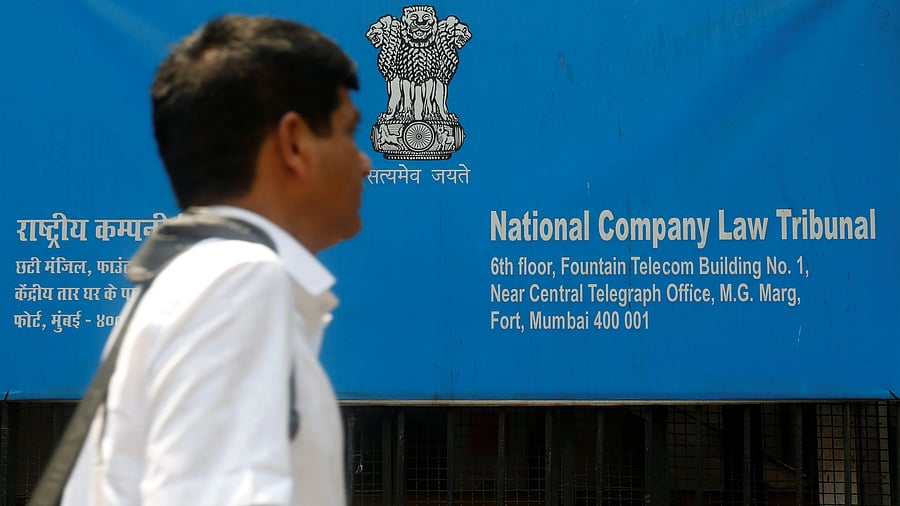
A man walks past a signboard of the National Company Law Tribunal (NCLT) outside it's office in Mumbai.
Credit: Reuters Photo
New Delhi: The Insolvency and Bankruptcy Code (IBC), which was introduced in 2016, has helped in resolving Rs 26 lakh crore of debt, including Rs 12 lakh crore of direct resolution, rating agency Crisil said on Tuesday.
In the past nine years, the IBC has enabled direct resolution of 1,200 cases of stressed borrowers involving debt of Rs 12 lakh crore.
It has also created significant deterrence amongst borrowers leading to the settlement of around 30,000 cases with Rs 14 lakh crore of debt even before applications made to the National Company Law Tribunal (NCLT) were admitted.
“One-fourth of the total debt resolved since 2016 has been through the IBC, which has achieved the highest recovery rate among the various debt resolution mechanisms seen till date and contributed 50% to total recovery," said Mohit Makhija, Senior Director, Crisil Ratings.
"Aided by its deterrence effect, IBC will remain the preferred route for debt resolution in the days ahead as well," Makhija added.
The primary change in debt resolution approach that IBC brought in has been the shift from a debtor-in-control model to a creditor-in-control framework.
As per the Crisil report, Rs 48 lakh crore of debt has been resolved through different debt resolution mechanisms since 2016. The average recovery rate under the IBC has been the highest at 30-35%, versus 22% for Securitisation and Reconstruction of Financial Assets and Enforcement of Security Interest Act (SARFAESI), 7% for Debt Recovery Tribunal (DRT) and 3% for Lok Adalat.
Key reasons for the relative success of the IBC compared to other debt resolution mechanisms include the flexibility accorded to creditors to change the managements of viable assets on a going-concern basis — and to right-size debt.
These, coupled with the improved economic environment over the past three fiscals, have boosted investor interest, especially in the infrastructure and manufacturing sectors, Crisil said.
However, the high backlog of cases at the NCLT poses challenges for the time debt resolution. Average timeline of the debt resolution cases at the NCLT stood at 713 days as of March 31, 2025 against the regulatory prescribed 330 days.
"Increasing the NCLT bench strength by 15 judicial members will help reduce the backlog of 7,000 cases pending with the tribunal as of last fiscal," said Tanvi Fifadra, Associate Director, Crisil Ratings.
Furthermore, recent amendments targeting the real estate sector may expedite the resolution of 200 cases, with total admitted claims of Rs 70,000 crore, which have been pending for an average of 2.5 years, Fifadra said.